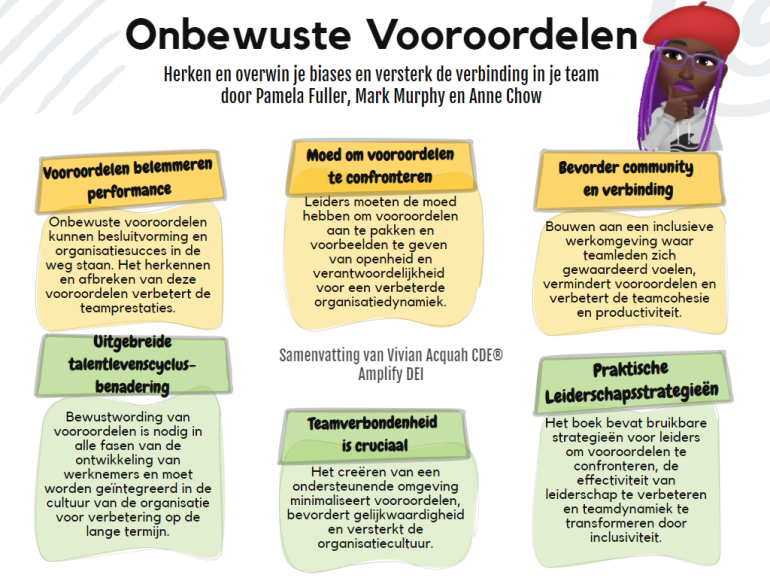“The Leader’s Guide to Unconscious Bias” by Pamela Fuller, Mark Murphy and Anne Chow, is a transformative resource for leaders pursuing personal growth and organizational success. This book, also available in Dutch as “Unconscious Prejudices,” highlights the often overlooked nuances of unconscious bias in the workplace. It provides leaders with a powerful framework to address these issues head-on, improve team performance and achieve business goals.
About my dyslexia
I always read English books because of the audio versions, which is useful for dyslexia. Reading in Dutch without an audiobook is challenging. This review is based on the English version, knowing that the Dutch version contains context-specific examples. This book can be useful for leaders who want to combat inappropriate behavior and strengthen diversity, equality and inclusion within their teams.
Unconscious biases hinder business goals
Central to the book is the message that unconscious biases are not just personal issues, but serious barriers to performance within organizations. The authors emphasize that everyone, often unconsciously, has biases that subtly influence decisions and interactions. They challenge leaders to remain vigilant against “bias traps,” the emotional judgments that distort perceptions and decisions. By identifying and understanding these pitfalls, leaders can begin to break down the barriers they create.
Strengthen connectedness
A key theme in the book is the need for leaders to reduce bias by fostering a sense of community and connection within their teams. Fuller, Murphy and Chow make it clear that an inclusive environment, where team members feel valued and connected, is crucial for minimizing bias. Such environments not only promote equality, but also significantly increase team cohesion and productivity.
Confront unconscious biases
The book also emphasizes the courage it takes to confront prejudice. Leaders are encouraged to address biases directly and courageously when they arise. This sets an example of openness and responsibility within their organizations. This courage is essential to creating a culture in which biases are not only recognized, but actively addressed.
Reduce biases throughout the “talent life cycle”
A notable aspect of the book is its emphasis on addressing biases throughout the “talent lifecycle.” From recruitment and selection to onboarding and performance management, Fuller, Murphy and Chow provide a comprehensive blueprint. It helps leaders integrate bias awareness and mitigation into every stage of employee development. This holistic approach ensures that reducing bias is not a one-time effort, but an ongoing process that is deeply embedded in the organizational culture.

Practical leadership tools
The authors provide a range of practical strategies and tools that leaders can use to change their leadership style. These strategies are intended to address and reduce biases, as well as improve leadership effectiveness and team dynamics. The book provides leaders with exercises and best practices to create high-performing teams, driven by inclusivity and understanding.
For real leaders
In short, The Leader’s Guide to Unconscious Biasof Unconscious Prejudices (affiliate) is an essential guide if you are a leader who wants to lead with empathy and insight. The book provides practical, actionable advice and acts as a roadmap for transforming leadership approaches. It cultivates environments where all team members can thrive.
So are you a leader who wants to achieve her/his/their business goals while promoting a culture of inclusion and equality? Then this book is highly recommended.
Source: www.frankwatching.com


